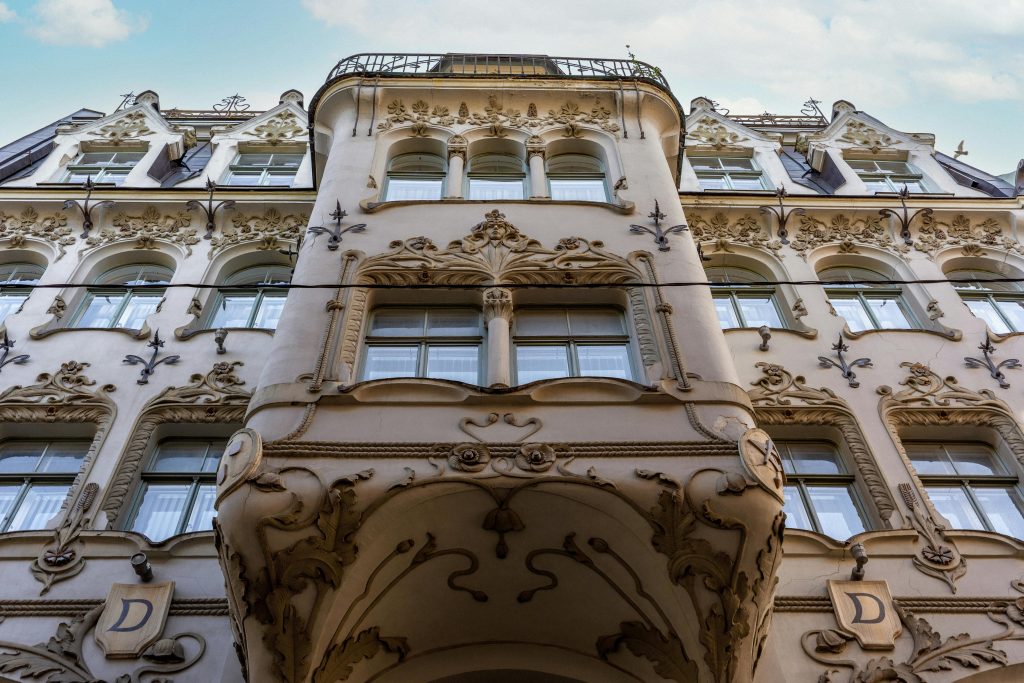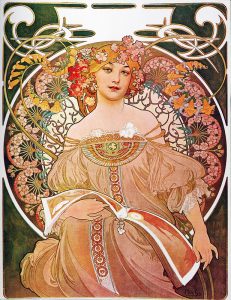
Introduction to Art Nouveau in Germany
Art Nouveau, known as Jugendstil in Germany, emerged as a transformative artistic movement at the turn of the 20th century. Characterized by its sinuous lines, organic forms, and intricate details, Art Nouveau sought to break away from the academic traditions of the past and embrace a more natural and expressive style. In Germany, this movement found a vibrant expression across various disciplines, from architecture to decorative arts, leaving an indelible mark on the country’s cultural heritage.
German Art Nouveau was deeply influenced by both national and international trends, leading to a rich and diverse body of work. German artists and architects drew inspiration from nature and incorporated elements such as flowers, plants, and flowing lines into their creations. This article explores the key aspects of Art Nouveau in Germany, highlighting its architectural wonders, notable artists, and lasting impact on the cultural landscape.
The Architectural Marvels of Jugendstil
Architecture played a central role in the development of Art Nouveau in Germany. The movement’s emphasis on fluid lines and natural forms found a remarkable expression in the buildings designed by prominent architects of the era. One of the most notable figures was Henry van de Velde, a Belgian-born architect who became a leading proponent of Jugendstil in Germany. His works, such as the Nietzsche Archive in Weimar, exemplify the movement’s aesthetic principles and innovative use of materials.
Another significant architect was Peter Behrens, whose contributions to industrial design and architecture were groundbreaking. Behrens’ AEG Turbine Factory in Berlin, with its bold geometric forms and integration of functionality and aesthetics, set a new standard for modern industrial architecture. These architectural achievements not only transformed the urban landscape of Germany but also established a legacy of creativity and innovation.
The Influence of Munich and Darmstadt
Munich and Darmstadt were two key centers for the development of Art Nouveau in Germany. In Munich, the movement found fertile ground within the city’s vibrant artistic community. The Munich Secession, an association of artists who broke away from the traditional art institutions, played a pivotal role in promoting Jugendstil. Their exhibitions and publications helped to disseminate the new style and foster a spirit of experimentation and collaboration.
Darmstadt, on the other hand, became a hub for Art Nouveau through the efforts of the Grand Duke Ernst Ludwig of Hesse. The Darmstadt Artists’ Colony, founded in 1899, brought together some of the leading artists and designers of the time. The Mathildenhöhe, the colony’s main exhibition site, showcased works that exemplified the unity of art and design. This creative environment led to the production of innovative and influential works that left a lasting impact on the Art Nouveau movement in Germany.
Prominent Artists of German Art Nouveau
German Art Nouveau was not limited to architecture; it also found expression in the works of numerous painters, sculptors, and graphic artists. One of the most renowned artists of the movement was Hermann Obrist, whose dynamic sculptures and wall hangings captured the essence of Jugendstil’s emphasis on organic forms and movement. Obrist’s works, such as his famous “Whiplash” motif, became iconic representations of the movement’s aesthetic.
Another influential figure was Otto Eckmann, a painter and graphic designer whose contributions to Art Nouveau were significant. Eckmann’s designs for magazines and books, characterized by their elegant lines and harmonious compositions, helped to define the visual language of Jugendstil. His work for the magazine “Jugend,” from which the movement took its name, was particularly influential in shaping the style and direction of German Art Nouveau.
Decorative Arts and Design
The decorative arts played a crucial role in the Art Nouveau movement in Germany, with artisans producing stunning furniture, glassware, and ceramics. The workshops of the Vereinigte Werkstätten für Kunst im Handwerk in Munich became renowned for their innovative designs and high-quality craftsmanship. The furniture produced during this period, characterized by its curvilinear forms and intricate inlays, exemplified the movement’s commitment to beauty and functionality.
Glassware and ceramics also saw significant developments under the influence of Jugendstil. Artists such as Josef Maria Olbrich and Bruno Paul created pieces that featured flowing lines and organic motifs. These items not only enhanced the aesthetic appeal of everyday objects but also brought the spirit of Art Nouveau into the homes of ordinary Germans. The emphasis on craftsmanship and artistic integrity in these decorative arts continues to be celebrated today.
The Role of Graphic Arts and Posters
Graphic arts and posters were vital mediums for the dissemination of Art Nouveau aesthetics in Germany. Artists like Franz von Stuck and Thomas Theodor Heine revolutionized poster design with their innovative approaches. Stuck’s posters, often depicting mythological and allegorical themes, captured the movement’s fascination with symbolism and sensuality. His use of bold lines and dramatic compositions made his work instantly recognizable and influential.
Thomas Theodor Heine, known for his satirical illustrations and posters, also played a significant role in popularizing Jugendstil through his work for the magazine “Simplicissimus.” Heine’s sharp wit and distinctive style helped to establish the visual identity of the publication, making it a leading voice in the cultural discourse of the time. The widespread visibility of these posters contributed to the broader public’s appreciation and recognition of Art Nouveau.
The Impact on Everyday Life
Art Nouveau’s influence permeated everyday life in Germany, extending beyond the realms of high art and architecture. The movement’s principles were applied to a wide range of everyday objects, from household items to fashion. German designers created textiles, wallpaper, and ceramics that featured the characteristic flowing lines and natural motifs of Jugendstil. These items brought the beauty and elegance of the movement into the homes of ordinary people.
In the realm of fashion, designers such as Paul Iribe embraced the fluid forms and organic patterns of Art Nouveau. Iribe’s innovative designs broke away from the rigid silhouettes of the past, offering women more freedom of movement and expression. The influence of Art Nouveau on fashion not only transformed clothing styles but also reflected broader cultural shifts towards modernity and individuality.
Conclusion
Art Nouveau in Germany, known as Jugendstil, represents a period of remarkable artistic innovation and expression. From the architectural masterpieces of Henry van de Velde and Peter Behrens to the exquisite glasswork of Josef Maria Olbrich and the iconic posters of Hermann Obrist, the movement left an enduring legacy in the cultural landscape of Germany. The principles of Art Nouveau, with their focus on beauty, nature, and innovation, continue to inspire artists and designers today, serving as a testament to the timeless appeal of this extraordinary period in art history.



